A.L. Butcher's Blog, page 76
July 7, 2021
Monsters Among Us – Blog Tour – Horror
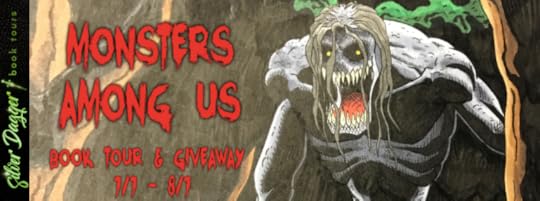
 Monsters Among Usby Liz ZemlickaGenre: Horror
Monsters Among Usby Liz ZemlickaGenre: Horror
 Are there truths in legends? How far would the people of a small town go to keep the truth? When four bored and curious teenagers; Gabby, Max, Luke and Becca explore the forest surrounding their small town. They stumble upon something terrifying and deadly.Soon it stalks them until one of them is dead, one is missing and they send one away for twenty years.Now adults, a determined Gabby and Max set out to find the truth about what happened to their friends. But what they find in that forest is nothing they ever could have imagined.Sometimes the truth is far more horrifying. “Quite intriguing, a very good read from start to finish.”— ★ ★ ★ ★ ★ Richard Biddle Goodreads * Amazon
Are there truths in legends? How far would the people of a small town go to keep the truth? When four bored and curious teenagers; Gabby, Max, Luke and Becca explore the forest surrounding their small town. They stumble upon something terrifying and deadly.Soon it stalks them until one of them is dead, one is missing and they send one away for twenty years.Now adults, a determined Gabby and Max set out to find the truth about what happened to their friends. But what they find in that forest is nothing they ever could have imagined.Sometimes the truth is far more horrifying. “Quite intriguing, a very good read from start to finish.”— ★ ★ ★ ★ ★ Richard Biddle Goodreads * Amazon

 Liz started writing as a teenager and has always stayed an avid reader. With inspiration from great writers of horror fiction like Stephen King, Anne Rice, Ray Bradbury and many more. She has improved her writing style and found her niche in storytelling and entertaining. Born and raised in the Midwest. A nurse, mother to three boys, and a pit bull rescue mama. She always had a fascination with the unseen and things that can play with your mind and terrify you beyond the reach of your five senses. Website * Facebook * Twitter * Instagram * Bookbub * Amazon * Goodreads
Liz started writing as a teenager and has always stayed an avid reader. With inspiration from great writers of horror fiction like Stephen King, Anne Rice, Ray Bradbury and many more. She has improved her writing style and found her niche in storytelling and entertaining. Born and raised in the Midwest. A nurse, mother to three boys, and a pit bull rescue mama. She always had a fascination with the unseen and things that can play with your mind and terrify you beyond the reach of your five senses. Website * Facebook * Twitter * Instagram * Bookbub * Amazon * Goodreads
 Follow the tour
HERE
for special content and a giveaway! $15 Amazon giftcard, Swag Pack, Paperback Copy of Monsters Among Us – 1 winner each!
Follow the tour
HERE
for special content and a giveaway! $15 Amazon giftcard, Swag Pack, Paperback Copy of Monsters Among Us – 1 winner each!a Rafflecopter giveaway https://widget-prime.rafflecopter.com/launch.js

The First Sin – Blog Tour #ContemporaryFiction
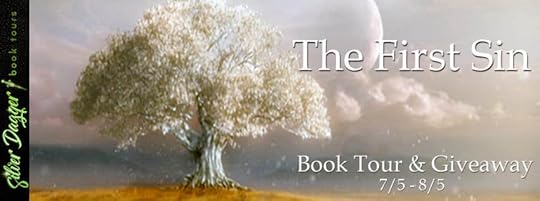
 The First Sin: South of Edenby Lisa Beth DarlingGenre: Contemporary Fiction
The First Sin: South of Edenby Lisa Beth DarlingGenre: Contemporary Fiction
 Lucifer Returns to Eden Lucifer is unceremoniously yanked out of Hell by his Father so he can return to his old job in the Garden of Eden. When he arrives, broken, battered, and bleeding, he falls into the arms of Eve who is unsure about seeing her old lover again as are the people now living in a dying paradise.Tasked with returning the Sacred Trees of Life and Knowledge to flourishing bounty once more, Lucifer struggles to learn his new place in his old home. Yet, he hasn’t been placed there solely to tend the Garden. His son, Cain, is on the way with murder and destruction on his mind. Having lived, cursed by God, for eons, Cain Enoch has made quite a name for himself and amassed a fortune that would make even his Grandfather envious and with it he’ll stop at nothing to find Eden and destroy. Why? So he can finally die even though it means taking the Earth, Heaven, and Hell with him. Goodreads * Amazon
Get a limited edition signed copy here!
Lucifer Returns to Eden Lucifer is unceremoniously yanked out of Hell by his Father so he can return to his old job in the Garden of Eden. When he arrives, broken, battered, and bleeding, he falls into the arms of Eve who is unsure about seeing her old lover again as are the people now living in a dying paradise.Tasked with returning the Sacred Trees of Life and Knowledge to flourishing bounty once more, Lucifer struggles to learn his new place in his old home. Yet, he hasn’t been placed there solely to tend the Garden. His son, Cain, is on the way with murder and destruction on his mind. Having lived, cursed by God, for eons, Cain Enoch has made quite a name for himself and amassed a fortune that would make even his Grandfather envious and with it he’ll stop at nothing to find Eden and destroy. Why? So he can finally die even though it means taking the Earth, Heaven, and Hell with him. Goodreads * Amazon
Get a limited edition signed copy here!

 As of this writing, I am 54 years-old, the mother of two adult daughters, grandmother to one, and wife to my husband, Roy, for the last 34 years. I live and write in my hometown of New London, CT.I began my writing career in the 4th grade when the class was given its first-ever Creative Writing assignment. I put pencil to paper and was instantly transported to a place I knew that I would never want to leave. I have been publishing my works since 7th grade.My early influences were Stephen King, Mary Higgins Clark, Harold Robins, Jacqueline Susan and VC Andrews. As such, my works tend to be a grand mash-up of drama, horror, suspense, action, intrigue, and, of course, intimate relations.In my spare time I enjoy gardening and photography as well as cooking and baking. I also enjoy helping other authors bring their works to the world stage. Website * Facebook * Twitter * Instagram * Bookbub * Amazon * Goodreads
As of this writing, I am 54 years-old, the mother of two adult daughters, grandmother to one, and wife to my husband, Roy, for the last 34 years. I live and write in my hometown of New London, CT.I began my writing career in the 4th grade when the class was given its first-ever Creative Writing assignment. I put pencil to paper and was instantly transported to a place I knew that I would never want to leave. I have been publishing my works since 7th grade.My early influences were Stephen King, Mary Higgins Clark, Harold Robins, Jacqueline Susan and VC Andrews. As such, my works tend to be a grand mash-up of drama, horror, suspense, action, intrigue, and, of course, intimate relations.In my spare time I enjoy gardening and photography as well as cooking and baking. I also enjoy helping other authors bring their works to the world stage. Website * Facebook * Twitter * Instagram * Bookbub * Amazon * Goodreads
 Follow the tour
HERE
for special content and a giveaway! $10 Amazon a Rafflecopter giveaway
Follow the tour
HERE
for special content and a giveaway! $10 Amazon a Rafflecopter giveaway

July 6, 2021
The Broken – Blog Tour #crimefiction

 The Brokenby J.J. HernandezGenre: Crime Fiction
The Brokenby J.J. HernandezGenre: Crime Fiction
 Just released from prison, Julian Serrano is determined to get his life back by reconnecting with his son, maintaining a legit job, and steering clear of the life of crime that led him to prison in the first place. All while under the watchful eye of his parole officer, Diana Rivera. But while Julian fights to stay out of the life that cost him everything he loved, Diana struggles with her own heartache and loss. Thrust back in the life when things don’t go as planned, Julian must decide who to trust and what plays to make. All while trying to keep Diana believing he’s staying on the straight and narrow. In an untangling web of betrayal, lies, and old debts come due, Julian and Diana must come together to save each other from the ghosts of their pasts. Goodreads * Amazon
Just released from prison, Julian Serrano is determined to get his life back by reconnecting with his son, maintaining a legit job, and steering clear of the life of crime that led him to prison in the first place. All while under the watchful eye of his parole officer, Diana Rivera. But while Julian fights to stay out of the life that cost him everything he loved, Diana struggles with her own heartache and loss. Thrust back in the life when things don’t go as planned, Julian must decide who to trust and what plays to make. All while trying to keep Diana believing he’s staying on the straight and narrow. In an untangling web of betrayal, lies, and old debts come due, Julian and Diana must come together to save each other from the ghosts of their pasts. Goodreads * Amazon

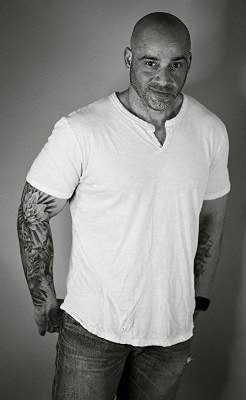 J.J. Hernandez was born in Brooklyn, New York and raised in Brooklyn and Miami, Florida. He is a graduate of Sam Houston State University and has been a law enforcement officer in Central Texas for twenty years. He lives in Austin, Texas with his wife and two daughters. Website * Facebook * Instagram * Bookbub * Amazon * Goodreads
J.J. Hernandez was born in Brooklyn, New York and raised in Brooklyn and Miami, Florida. He is a graduate of Sam Houston State University and has been a law enforcement officer in Central Texas for twenty years. He lives in Austin, Texas with his wife and two daughters. Website * Facebook * Instagram * Bookbub * Amazon * Goodreads
 Follow the tour
HERE
for special content and a giveaway! Signed Copy of The Broken,$15 Amazon giftcard-1 winner each! a Rafflecopter giveaway
Follow the tour
HERE
for special content and a giveaway! Signed Copy of The Broken,$15 Amazon giftcard-1 winner each! a Rafflecopter giveaway

July 3, 2021
Chroniques de la lumière au-delà de la tempête – Tome I (The Light Beyond the Storm Book I – French Edition)
Dans un monde sombre où la magie est illégale et où les elfes sont réduits en esclavage, une jeune sorcière elfe s’enfuit de la maison de son méchant gardien. Poursuivie par ses hommes et l’Ordre corrompu des chasseurs de sorcières, elle doit trouver refuge. Alors que les esclavagistes parcourent les terres en volant des elfes de ce qui reste de leur maison ancestrale, les chasseurs de sorcières ferment les yeux sur la tragédie et une histoire de pouvoir, d’amour et d’une terrible vengeance se déroule.
#Elfes, #Fantastique, #DarkFantasy, #Érotismefantastique, #Magie
https://books2read.com/LBTS-Chroniques-de-la-lumiere-au-dela-de-la-tempeteFrench

June 22, 2021
Buiten de muren – Nederlandse editie
Wanneer het tij van de oorlog vloeit, wie zal dan in zijn kielzog worden gevangen? Een kort fantasieverhaal over de vastberadenheid van een vrouw in tijden van oorlog.
#Fantasie, #Historischefictie, #Novelle
https://books2read.com/Outsidethewalls-Dutch
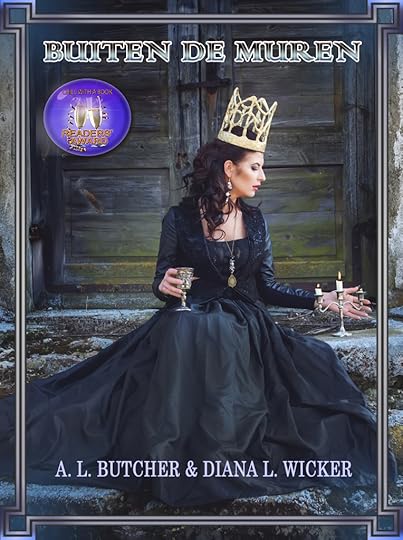
June 16, 2021
Whisper of Darkness – Blog Tour and Guest Post #Fantasy #Paranormal Romance

Here is an interview with author Kirsten
What inspired you to write this book? I love fantasy, all subgenres, and there’s common mythical beings who get written about (vampires, shifters, fae, witches to name a few), and I was trying to think of a “darker” fantasy character to write about, and a banshee popped into my mind. Researching it more, I found out banshees stem from Irish/Celtic folklore, and it was a slippery slope from there, leading me to all the other characters like druids, pucas, and other Celtilc fae.
What can we expect from you in the future? **Chants** More books! More books! More books! I wish I could write as fast as my novel ideas sprout in my brain. I plan for Banshee’s Curse to be a 4 or 5 book series. Plus, I have the first book of my YA mermaid series written, and I hope for that to be a 4 book series. That one is really fun because I essentially thought, “I have a lot of knowledge about the ocean, so how can I take real ocean phenomena and create a mer-community?” I still take creative license plenty of times, but most of what I write is grounded in something factual, so in a way it hinges on sci-fi too. Also, I already have a witch-familiar trilogy loosely plotted, dragon shifters, and incubi/demon ideas. Different representations I will have across these will be more LGBTQ+ characters, cancer survivor, and epilepsy to name a few. Also, in my mermaid series I have a main character who lost an arm. I am so excited with how all these diversities wind into these fantasy worlds I’m creating. Again, I wish I could write faster. I want to get books out to readers as soon as I can, which is one of the many reasons I decided to go an indie instead of the traditional publishing route.
Do you have any “side stories” about the characters? I do have a prequel novella out called Losing The Light. It’s short and sweet, about five chapters, and written from the perspective of the main love interest about six years prior to when the main series takes place. What happens in this novella is so pivotal to why certain characters are certain ways in the main series, I couldn’t help but dive into the day that changed everything a little bit more.
Can you tell us a little bit about the characters in Whisper of Darkness? Cara is the main character who has spent her life thinking she is cursed due to a ringing that occurs in her head before someone around her dies. Surprise! She’s not cursed, she’s a banshee! Other fun facts, she loves animals and makes inappropriate sounds when eating something delicious or has coffee. Also, she struggles with her mental health, which is to be expected when you have lived life with death haunt you.
Shay is a druid, and kind of a prick. He’s also the reason Cara ends up being taken away to another realm.
Killian can make a person’s worst nightmares come to life, but broody and hot despite the scars maring the left side of his body. Oh, and he loves crumble. Shay and Killian have a complex history, but I can’t tell you too much more because that’s part of the story!
I’d say these are the main three, at least for Book 1.
Where did you come up with the names in the story? Googling Irish/Celtic names until I found ones I liked. Sorry, it’s not more interesting than that.
What did you enjoy most about writing this book? I really love complex characters. Creating their backstories was so wonderful, and really letting my mind fly when it comes to magic.
How did you come up with the title of your first novel? Darkness is a theme for both Cara and Killian, something they bond over, both with their powers and the darkness they fight mentally. Whisper of Darkness makes me think of those evil voices in the back of your mind. You know the ones. The ones who say you’re fat, not worthy of love, that you’ll never accomplish anything, and whatever other terrible things that make you question yourself and your life. Cara is haunted in many ways, and I feel it’s a darkness always whispering in her mind, in her soul, dragging her to a darker place.
Who designed your book covers? A very talented friend and coworker designed Book 1, and I am using Miblart to design the others. My talented friend has 3 kids and is moving soon, so I didn’t want to make him commit to a 5 book series and figured it was better to find someone to finish out the series covers sooner rather than later.
If you had to do it all over again, would you change anything in your latest book? Don’t ask a writer that! We are our own worst critics! We will never be fully happy with our books, and we will always question things, even down to the “should I use the word ‘excited’ or ‘ecstatic’. So, needless to say I’ll say ‘no’ because if I think about it, I’ll question myself too much and start to stress out. See! Those little evil voices! Totally a thing. (Note: The end of this answer will only work if coupled with the ‘Title of your first novel’ question).
Did you learn anything during the writing of your recent book? So much! I learned so much about Irish and Celtic folklore. It was all wildly fascinating and so much fun to find ways to incorporate it. However, what I was most excited to learn about was more about autism for my character, Cadan. I did tons and tons of research as it is not a personal identity. However, I ended up hiring this absolutely amazing sensitivity reader who is not only autistic, but has a BA in creative writing and is currently working on a Master’s in Critical Theory with an emphasis on environmentalism, postcolonialism, race, gender and disability. They, also, identify as Black, an immigrant, trans, and indigenous. So, their scope both personally and academically/professionally was astounding. This made it so not only did they provide me feedback on Cadan, but often would explain more on the “why” behind including a specific characteristic. I wasn’t only being told what I did well or needed to work on, but learned why that is too. I am so immensely appreciative of them, and finding them was a complete blessing.
If your book was made into a film, who would you like to play the lead? Lily Collins would be perfect.
Anything specific you want to tell your readers? Find me on social media and say ‘Hi’! I love creating worlds, my mind creates worlds even if I don’t write them down, but it’s the readers that keep the steam in my engine. Hearing what you love, fan theories, seeing fan art, or just connecting about our mutual love for fantasy is such a huge driving force and will make my entire day.
What is your favorite part of this book and why? I love the Korrigan! A small water sprite who can see the past, present, and future. I make her a little devilish and wildly beautiful. It’s one chapter encompassing one of the trials in the competition that Cara is a part of, but I love it so much!
Are your characters based off real people or did they all come entirely from your imagination? 100% from my imagination. Well, I guess certain qualities of my main character was inspired by my alpha reader, like her love for animals.
Have you written any other books that are not published? My YA mermaid series, but I plan to publish Book 1 soon!
If your book had a candle, what scent would it be? “First Rain.” The smell of a first rain is so distinct, and that would 100% be my book. You’ll completely understand why if you decide to read it.
Is there a writer whose brain you would love to pick for advice? Who would that be and why? Any fantasy writer! I want all the author friends! Annette Marie, Sara J Maas, Laura Thalassa, Audrey Grey, Annette Marie, Leia Stone, Jaymin Eve, Jennifer L Armentrout, Holly Black, this list could go on forever! They are so amazing with their world building, character development, story flow. They are all icons in their own way, and it would be hard not to fangirl around any of them. I would do my best to play it cool though because I want more author friends. I adore the best friendship between Leia Stone and Jaymin Eve, and totally hope to find my author BFF one day.
Whisper of Darkness
Banshee’s Curse Book 1
by Kristen Braddock
Genre: Dark Fantasy, Paranormal Romance
Cara Winters is cursed.
Loss has haunted her through life. A fun night out with her sister ends in disaster when she learns she’s a banshee. With a chance encounter and life debt owed, she’s coerced into a deadly competition in the far realm. To survive she finds an unlikely ally in Killian, a mysterious and prickly dark fae.
The only way to win and get back to Earth is using her powers, but doing so may unravel her to the point of no return.
Perfect for fans of fated mates, enemies to lovers, complicated & diverse characters, slow burn romance, and celtic folklore. Suggested for ages 15+ due to some language and violence.
**From June 7-21, 100% of my profits will go to Foundations of Divergent Minds (instead of the usual 10%), a nonprofit founded and run by autistic people for disability justice!**
Goodreads: https://www.goodreads.com/book/show/57968666-whisper-of-darkness
Amazon: https://www.amazon.com/dp/B08W34YC8Q
About the Author
Characters and their worlds have inundated Kristen’s mind since she was a kid. Traveling to far off places and having words on a piece of paper transform into entire scenes pulling at her emotions is an obsession.
Her goal as a fantasy author isn’t solely to relish in her imagination, but to bring representation to this genre. She wants stories with characters who are diverse inside and out. Their differences are not the focal point of the story, but rather a natural part of their being. Due to this, you will often not only find characters of varying ethnicities, but of the LGBTQ+ community, who battle diseases, are neuroatypical, and plenty of other areas that make us all so different from each other. These are not their defining qualities. It’s simply a part of who they are. To further support these communities, Kristen donates 10% of her profits to various organizations.
When Kristen isn’t cooped up on her computer or curled up with a book, she is often outdoors– hiking, snorkeling, diving, camping, etc.
Currently, she resides in California with her husband and fur babies (two dogs and a cat).
Website * Facebook * Twitter * Instagram * Amazon * Goodreads
Author Links
Website: https://www.kristenbraddock.com
Facebook: https://www.facebook.com/Kristen-Braddock-Books-533014020945418
Twitter: https://twitter.com/kristenbraddock
Instagram: https://www.instagram.com/kristenbraddockauthor
Amazon: https://www.amazon.com/Kristen-Braddock/e/B08VN382MC
Goodreads: https://www.goodreads.com/author/show/21200091.Kristen_Braddock
Giveaway
Signed paperback + Swag Pack (1 winner, US only),
$15 Amazon giftcard (1 winner, WW),
ebook of Whisper of Darkness (5 winners, WW)
Follow the tour HERE for special content and a giveaway!
https://www.silverdaggertours.com/sdsxx-tours/whisper-of-darkness-book-tour-and-giveaway
June 1, 2021
Pride of Ashna Blog Tour and Guest Post #Scifi #SpaceOpera Emmanuel M Arriaga

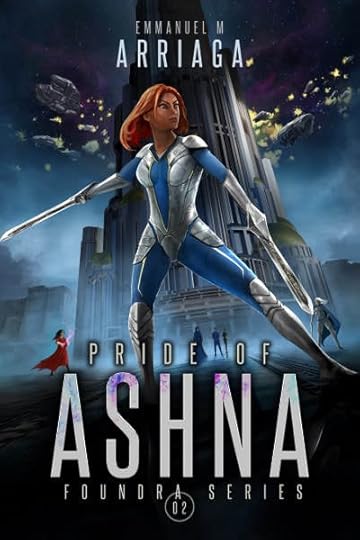 Pride of AshnaFoundra Book 2by Emmanuel M ArriagaGenre: Science Fiction, Space Opera
Pride of AshnaFoundra Book 2by Emmanuel M ArriagaGenre: Science Fiction, Space Opera
 In the Outer Rim, a lawless region of space filled with violence, a young girl vows vengeance against the marauding pirate bands who brutally murdered her family. After enlisting with the zealous matriarchal Ashna Maidens who attempt to police the Outer Rim, Serah’Elax quickly becomes a powerful weapon. Meanwhile, a ruthless pirate band has taken over a cruise ship deep within Alliance space. They run into unexpected trouble when they encounter a few members of the highly trained force of military specialists known as the Founder’s Elites, who happened to be vacationing on the vessel. Disturbed by the boldness of the pirates, the Alliance tasks the rest of the Founder’s Elites with dealing a powerful blow to the marauders, who normally operate in the Outer Rim, once and for all. However, they quickly discover that things in the Outer Rim are not as expected. The young warrior and Founder’s Elites must come together to face an extradimensional threat left over from the Rift War that seeks to turn the last bastion of safety in the Outer Rim into something that could threaten the entire Twin Galaxies. Will the new allies have the cunning necessary to defeat this insidious threat or will it tear the Ashna Maidens apart from the inside? **Discounted price of $2.99 for a limited time!**Goodreads * Amazon
In the Outer Rim, a lawless region of space filled with violence, a young girl vows vengeance against the marauding pirate bands who brutally murdered her family. After enlisting with the zealous matriarchal Ashna Maidens who attempt to police the Outer Rim, Serah’Elax quickly becomes a powerful weapon. Meanwhile, a ruthless pirate band has taken over a cruise ship deep within Alliance space. They run into unexpected trouble when they encounter a few members of the highly trained force of military specialists known as the Founder’s Elites, who happened to be vacationing on the vessel. Disturbed by the boldness of the pirates, the Alliance tasks the rest of the Founder’s Elites with dealing a powerful blow to the marauders, who normally operate in the Outer Rim, once and for all. However, they quickly discover that things in the Outer Rim are not as expected. The young warrior and Founder’s Elites must come together to face an extradimensional threat left over from the Rift War that seeks to turn the last bastion of safety in the Outer Rim into something that could threaten the entire Twin Galaxies. Will the new allies have the cunning necessary to defeat this insidious threat or will it tear the Ashna Maidens apart from the inside? **Discounted price of $2.99 for a limited time!**Goodreads * Amazon
 FoundraFoundra Book 1
FoundraFoundra Book 1
 The Huzien Empire has existed for 80 millennia and a powerful invisible force known as the enesmic permeates every aspect of the Twin Galaxy. Neven is an engineer working for the pinnacle of scientific achievement known as the MinSci on the Huzien homeworld of Thae. His genius draws the attention of one of the immortal Founders and he finds himself drafted into the military as part of an elite group of special forces known as the Founder’s Elites. Not given much time to adjust, his team is called to investigate stories of otherworldly creatures attacking fringe colony worlds. Soahc is the most powerful wielder of the enesmic in the Twin Galaxy, he’s also incredibly cocky. That is until he senses a powerful shifting in the enesmic that he can’t explain. Terrified that something is horribly wrong, Soahc leaves his comfortable planet and hitches a ride with Neven and the Founder’s Elites as they investigate the carnage on the fringes of the empire. Neven, Soahc and their allies discover something ancient from another plane of existence. Something that exposes the fragility of their galactic empire as they fight to survive annihilation from enesmic beings. — *Reader Reviews for Foundra*“Well written, ambitious sci-fi epic.”“An entire space saga you won’t want to put down.”“Amazing characters, exciting new world, incredible writing.”“If you love reading about galactic empires, get your hands on this book.”“An elaborately fun sci fi story.” **Kindle Countdown Sale May 4th – 10th!!!**Goodreads * Amazon
The Huzien Empire has existed for 80 millennia and a powerful invisible force known as the enesmic permeates every aspect of the Twin Galaxy. Neven is an engineer working for the pinnacle of scientific achievement known as the MinSci on the Huzien homeworld of Thae. His genius draws the attention of one of the immortal Founders and he finds himself drafted into the military as part of an elite group of special forces known as the Founder’s Elites. Not given much time to adjust, his team is called to investigate stories of otherworldly creatures attacking fringe colony worlds. Soahc is the most powerful wielder of the enesmic in the Twin Galaxy, he’s also incredibly cocky. That is until he senses a powerful shifting in the enesmic that he can’t explain. Terrified that something is horribly wrong, Soahc leaves his comfortable planet and hitches a ride with Neven and the Founder’s Elites as they investigate the carnage on the fringes of the empire. Neven, Soahc and their allies discover something ancient from another plane of existence. Something that exposes the fragility of their galactic empire as they fight to survive annihilation from enesmic beings. — *Reader Reviews for Foundra*“Well written, ambitious sci-fi epic.”“An entire space saga you won’t want to put down.”“Amazing characters, exciting new world, incredible writing.”“If you love reading about galactic empires, get your hands on this book.”“An elaborately fun sci fi story.” **Kindle Countdown Sale May 4th – 10th!!!**Goodreads * Amazon

 Emmanuel M. Arriaga grew up in the inner city of Philadelphia, Pennsylvania. From a young age, he was obsessed with fantasy and science fiction. Breaking the shackles of a low-income life, Emmanuel developed an interest in science, technology and engineering. He went on to graduate from Pennsylvania State University with a Master’s in Information Science. For almost a decade, Emmanuel has sought to share his vivid imagination with the world, learning the art of story crafting and eventually becoming an award-winning author. With a love for travel, gadgets and volunteering, Emmanuel is enjoying life and helping others. Website * Facebook * Twitter * Instagram * Instagram * Bookbub * Amazon * Goodreads
Emmanuel M. Arriaga grew up in the inner city of Philadelphia, Pennsylvania. From a young age, he was obsessed with fantasy and science fiction. Breaking the shackles of a low-income life, Emmanuel developed an interest in science, technology and engineering. He went on to graduate from Pennsylvania State University with a Master’s in Information Science. For almost a decade, Emmanuel has sought to share his vivid imagination with the world, learning the art of story crafting and eventually becoming an award-winning author. With a love for travel, gadgets and volunteering, Emmanuel is enjoying life and helping others. Website * Facebook * Twitter * Instagram * Instagram * Bookbub * Amazon * Goodreads
 Follow the tour
HERE
for special content and a giveaway! $10 Amazon gift card & 1 Foundra t-shirt with character of choicehttps://amzn.to/3xvhAki-3 winners! a Rafflecopter giveaway
Follow the tour
HERE
for special content and a giveaway! $10 Amazon gift card & 1 Foundra t-shirt with character of choicehttps://amzn.to/3xvhAki-3 winners! a Rafflecopter giveaway

NFTs as an author
I’ve been experimenting with a new concept, utilizing the new market of NFTs, or Non-Fungible Tokens, as a means for connecting with new and existing readers. It’s been an interesting journey and I’ve had to dust off my experience with Photoshop’s more advanced capabilities to produce something worthy of the not insignificant cost of enshrining it permanently on the blockchain.
For background, NFTs are units of data on a digital ledger called a blockchain where each NFT represents a unique digital item and thus are not interchangeable. They are currently represented as digital items such as art, audio, videos, items in video games and other creative works (from Wikipedia). Once put on an online auction platform such as Rarible.com or Opeansea.io they can be purchased by interested parties with cryptocurrencies, typically Ethereum, as collectibles.
So, the question is, why should this matter to authors and readers? I’ve internalized this question myself while trying to determine what would be interesting as a reader to own from an author I liked. What I’ve come up with is something I’ve branded as Art Stories. These are short stories that I’ve written, woven into unique space art. It’s the marrying of art and writing in a way that I think truly expresses both forms of creativity. My first creation was called Ascension, based off of the short story by the same that I wrote back in 2014.
It was an interesting experience, and I’ve since started playing around with animations to make them more exciting. The possibilities are endless, and I think as the medium evolves, we’ll see more authors stepping out into the NFT world and more demand from readers. I’ve also started minting NFT collectibles from official character art for my upcoming sci-fi novel Pride of Ashna, due out May 4th. The first is such collectibles is out now.
Celebrate #Audiobook Month and Giveaway
NN Light Book Heaven presents #Audiobook Month

https://www.nnlightsbookheaven.com/celebrate-audiobook-month
Check out audiobooks from the authors listed.
June Schedule –
Note: Date is for Eastern Standard Timezone (East Coast US/Canada)
1- Karen Michelle Nutt (Collided)
2- Jo A. Hiestand (Unfolding), Zola Blue (Four)
3- Willa Blair (Rose)
4- Mark Rosendorf, Aubrey Wynne (Earl)
7- Mona Sedrak (Gravity)
8- Tena Stetler (Hidden), Jane Lewis (Flyer)
9- Lucinda Race (Blends)
10- Veronica Blake, Laura M. Baird
11- Judith Sterling, Becky Villareal
14- Virginia Barlow, N. Jade Gray (Raider)
15- Jo A Hiestand (Known)
16- Karen Michelle Nutt (End), A.L. Butcher
17- Dalia Dupris
18- Jana Richards, Zola Blue (Bound)
21- Lucinda Race (Breathe)
22- Helen C. Johannes, Pamela S. Thibodeaux
23- Tena Stetler (Chocolate), Cecilia Corona
24- Jane Lewis (Wylder), N. Jade Gray (Cowboy)
25- Jo A. Hiestand (Unwilling), Aubrey Wynne (Dante)
28- Karen Michelle Nutt (Heart)
29- Mona Sedrak (Six)
30- Willa Blair (HHH)
Giveaway Information
One lucky reader will win a $50 Amazon Gift Card
One lucky reader will win a $50 Amazon Gift Card
One lucky reader will win a $25 Amazon Gift Card
One lucky reader will win a $15 Amazon Gift Card
One lucky reader will win a $10 Amazon Gift Card
Direct Link:
https://www.rafflecopter.com/rafl/display/92db7750113
Open internationally
Runs June 1 – June 30.
Drawing will be held on July 1.

May 30, 2021
My Mum and Me – Blog Tour – Memoir
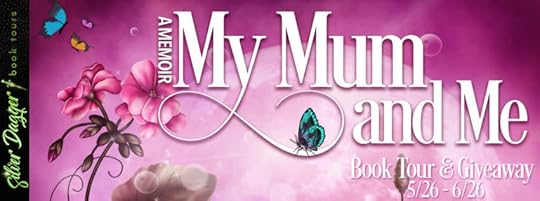
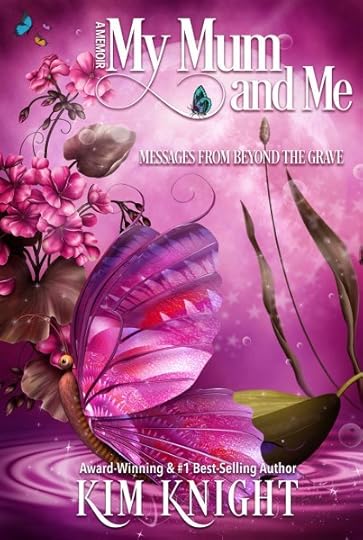 My Mum and MeMessages From Beyond the Graveby Kim KnightGenre: Memoir
My Mum and MeMessages From Beyond the Graveby Kim KnightGenre: Memoir
 “Life after death is no longer a ‘possibility’ for me, it’s a reality. It was proven within seventy-two hours of Mum passing away.” Is there such a thing as life after death? If you’ve been looking for confirmation that the soul of a deceased person lives on, this memoir will provide all the proof you need. Experience a life changing story—a loss of a mother who was overseas at the time of her passing, and how she found her way back to her daughter within seventy-two hours of her being pronounced dead, then made her visit from the spirit realm unquestionably known to her daughter here on Earth, in time and space. Goodreads *
Buy Link
“Life after death is no longer a ‘possibility’ for me, it’s a reality. It was proven within seventy-two hours of Mum passing away.” Is there such a thing as life after death? If you’ve been looking for confirmation that the soul of a deceased person lives on, this memoir will provide all the proof you need. Experience a life changing story—a loss of a mother who was overseas at the time of her passing, and how she found her way back to her daughter within seventy-two hours of her being pronounced dead, then made her visit from the spirit realm unquestionably known to her daughter here on Earth, in time and space. Goodreads *
Buy Link


Kim was born in 1983 and from London in the UK. She’s a mother to a beautiful little boy, an award winning romantic suspense and thriller author, and the #1 best-selling author of : My Mum and Me, Messages From Beyond The Grave (a memoir), 365 Days of Writing Prompts for Romance Writers, also The Art of Self-Editing for Writers. She’s also a best-selling author of an Unsolved Mysteries Series. Kim started her journey as a traditionally published author and later dived into self-publishing also. She also contributes as a writer to Aspiring Authors LLC Magazine.
As a reader she’s head over heels in love with romance, historical fiction, crime fiction, African- American, suspense and thriller genre books. As a writer, Kim enjoys creating steamy stories with a diverse and multi-cultural line up, within the romance, romantic suspense and general thriller and crime genres. Her other passions include learning about astrology, numerology, esoteric subjects, all things ‘witchy and strange’ and spirituality. When she’s not reading, or writing stories of her own fashion, make-up artistry, spending time at her sewing machine dressmaking, watching make –up and beauty tutorials on YouTube, and being a mum are things she’s probably doing.
Website * Facebook * Twitter * Bookbub * Amazon * Goodreads Follow the tour
HERE
for special content and a giveaway! Audiobook of My Mum and Me – 2 winners!$10 Amazon giftcard – 1 winner a Rafflecopter giveaway https://widget-prime.rafflecopter.com/launch.js
Follow the tour
HERE
for special content and a giveaway! Audiobook of My Mum and Me – 2 winners!$10 Amazon giftcard – 1 winner a Rafflecopter giveaway https://widget-prime.rafflecopter.com/launch.js
May 26, 2021
Random Acts of Crazy – Blog Tour/Blitz – Romance/Comedy – Free Book
RANDOM ACTS OF CRAZY (Random Series, Book 1) by Julia Kent is FREE until June 15th!
Genre: Romantic Comedy, Contemporary Romance
FREE EBOOK May 23-June 15, 2021
Description:
I never intended to pick up a naked hitchhiker wearing nothing but a guitar. A guitar. Really. I don’t collect guys like that (don’t ask what kind of guys I do collect), but when you spot a blonde, tanned, sculpted man with a gorgeous smile and his thumb poking up and practically begging you to stop – you stop.
And I definitely never thought I’d be staring into the bright blue eyes of Trevor Connor, the lead singer for Random Acts of Crazy, an indie rock star I followed like the slobbering fileshare fangirl I am. How he came to be nude and lost six hundred miles from home is quite the tale, but how we fell in love is even more unreal.
Because someone like Trevor Connor, headed to Harvard Law next year, isn’t supposed to want someone like me, a rural Ohio chick majoring in Boredom at Convenience Store University who is all curves and frizzy blonde hair and manners so unpolished they have sharp edges that make you bleed.
But he did.
When his best friend, Joe Ross, the bass player for Random Acts of Crazy and a man who makes Calvin Klein models look like Shrek, drove eleven hours through the night to rescue him, though, it got real complicated. It’s one thing to like two different guys and be torn.
What do you do, though, when maybe – just maybe – you don’t have to choose?
Shortened Buy links:
Amazon ALL: https://mybook.to/RAOC_AznALL
Apple Books: https://mybook.to/RAOC_AppleBooks
Nook: https://mybook.to/RAOC_Nook
Kobo: https://mybook.to/RAOC_Kobo
Google Play: https://mybook.to/RAOC_GooglePlay
BookBub: https://mybook.to/RAOC_BookBub
Goodreads: https://mybook.to/RAOC_Goodreads
Amazon Audio: https://mybook.to/RAOC_AznAudio
iTunes: https://mybook.to/RAOC_iTunes
Audible: https://mybook.to/RAOC_Audible
Author Bio:
New York Times and USA Today Bestselling Author Julia Kent writes romantic comedy with an edge. From billionaires to BBWs to new adult rock stars, Julia finds a sensual, goofy joy in every contemporary romance she writes. Unlike Shannon from Shopping for a Billionaire, she did not meet her husband after dropping her phone in a men’s room toilet (and he isn’t a billionaire). She lives in New England with her husband and three sons in a household where the toilet seat is never, ever, down
Excerpts and Teasers
When you’re coming down off ’shrooms and NyQuil and find yourself naked in a car older than you, 600 miles from home, a kiss is about the only thing that can make it all better. — Trevor
The fact that he was fully naked and I was not was a kind of tragedy. We needed to fix that. — Darla
I luxuriated in the pure joy of this, his mouth warm and wet as his tongue explored me, my body swelling under his fingers, strumming me like I was a replacement for his destroyed guitar.
Play me, man. Play me all night long. — Darla
I had two goals:
Find a way back into her good graces so she’d let me make love to her.Get some pants, shoes and a shirt.In that order. — Trevor
All I had were my wits and charm, and right now, the wits were pretty well blown.
Charm, don’t fail me now.– Trevor
Excerpt
Trevor
The ride from Darla’s house to the hotel room wasn’t a painful, silent trip, which is what I’d expected from my long-time friend. Shades of gray weren’t exactly his forte, and right now Darla, Joe, and I were about as grey as you could get.
Some sort of unexplained phenomenon was developing between the three of us, and now that we were down to just us two, it felt empty. Darker. Forlorn, yet not tense.
Just… unfulfilled.
Fortunately, I remembered how to get to the hotel, the roads laid out in an orderly manner, so unlike the Boston area, where the road map looked like it had been drawn by a nine-year-old drinking his second double espresso.
Yet another point for this place that until two days ago we’d have considered fly-over country, a vast green expanse with faded beige corn fields in between, a checkered patch quilt of nothing.
Not now.
Now it was far, far more.
Joe was in that half-drunk stupor that made him so much more fun than his normal, tightass state. How a guy who could attract women like light bulbs attract moths could be so insecure had puzzled me for years.
Something about Darla made him daring, though—that kiss had come out of nowhere. Coming upon them in that state, his hands groping what had just filled my own shortly before, her mouth so passionately entangled with his I could feel her need—being able to observe that, to share in that without feeling like we were competing for her—that blew my fucking mind.
You can do that? Really? Because no one told me that before. Ever. Not in the UU church’s sexuality class, not in any human psych class in college (not even abnormal psych), and not in any late-nights talks in the dorms, high as a kite and sharing sex stories (or even having sex while talking about sex).
Who did this? Who felt like this? How could I make sense of it if no one explained it to me?
I was on my own.
Freebie blitz organized by Writer Marketing Services.




